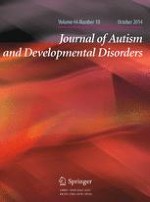01-10-2014 | Original Paper
Comparing Acquisition of AAC-Based Mands in Three Young Children with Autism Spectrum Disorder Using iPad® Applications with Different Display and Design Elements
Gepubliceerd in: Journal of Autism and Developmental Disorders | Uitgave 10/2014
Log in om toegang te krijgenAbstract
Augmentative and alternative communication (AAC) applications may differ in their use of display and design elements. Using a multielement design, this study compared mand acquisition in three preschool-aged males with autism spectrum disorder, across three different displays in two iPad® AAC applications. Displays included a Widgit symbol button (GoTalk), a photographical hotspot (Scene and Heard), and a Widgit symbol button along with a photograph (Scene and Heard). Applications had additional design differences. Two participants showed more rapid and consistent acquisition with the photographical hotspot than with the symbol button format, but did not master the combined format. The third participant mastered all three conditions at comparable rates. Results suggest that AAC display and design elements may influence mand acquisition.
